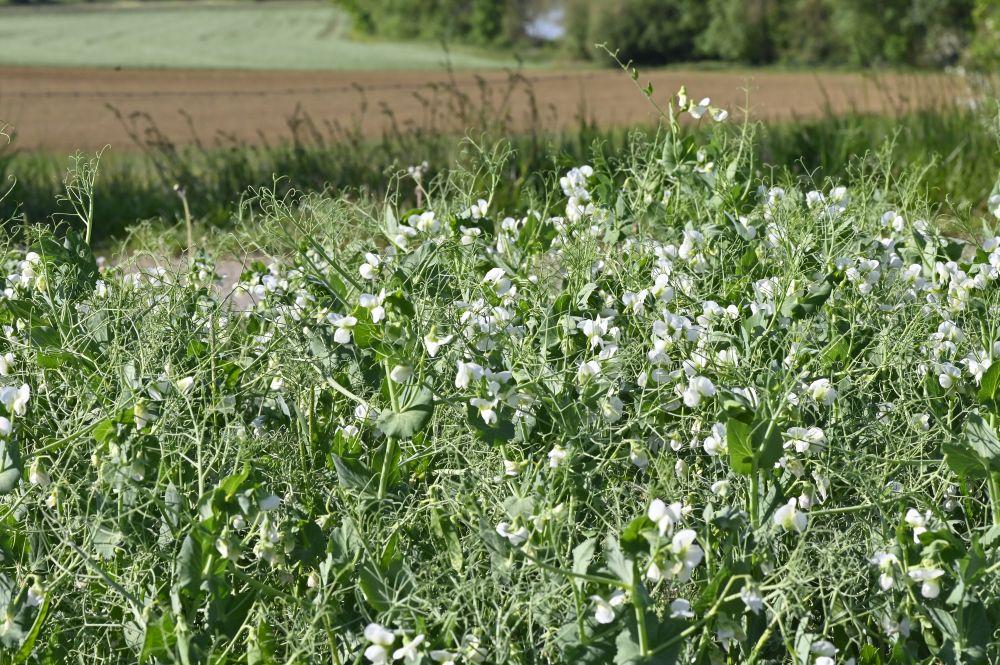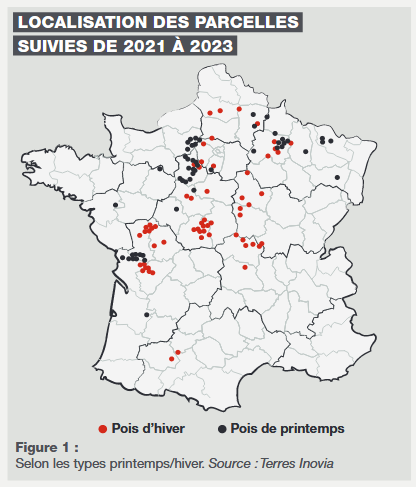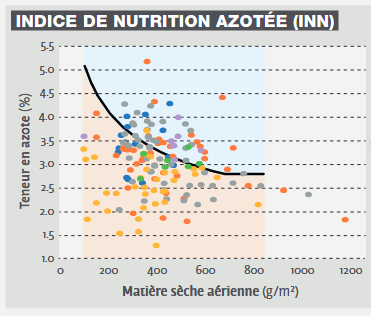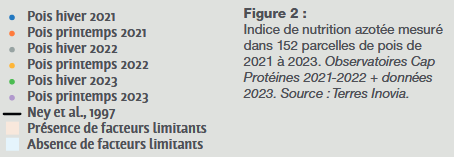Pea NNI: a tool for obtaining a robust crop
Pea NNI: a tool for obtaining a robust crop
The agronomic diagnosis is based on a range of criteria, including the nitrogen nutrition index. This is an early indicator of the development of a winter or spring pea crop. It can be used to detect plots that have suffered early stress and may not reach their yield potential.

Copyright: Terres Inovia, L. Jung
The nitrogen nutrition index (NNI) can be used to detect plots that have suffered early stress and will not reach their yield potential. It can be used to identify limiting factors linked to planting conditions (tillage, climate), the presence of pests (sitones) or diseases (aphanomyces). It is an ally in the construction of a dashboard to obtain robust peas and a suitable advisory tool to remedy the problems identified.
To this end, agronomic monitoring of farmers' plots, initiated in 2021 as part of the Cap Protéines project, has enabled us to understand the variability of the nitrogen nutrition index (NNI) for winter and spring peas over three seasons. Analysis of the data highlighted the limiting factors at the start of the cycle likely to affect the establishment of this key agronomic diagnostic indicator.
Monitoring initiated in Cap Protéines
Some 233 plots, located in the main pea-growing areas, were monitored from 2021 to 2023 (figure 1). From these plots, 152 NIN values were obtained, based on dry matter (DM) and nitrogen content measured at the early flowering stage (DF) or during flowering. The NIN values obtained were positioned in relation to a dilution curve established for peas in 1997 (figure 2): points below the curve indicate lower-than-normal growth and/or nitrogen content, and therefore the presence of limiting factors.

Climate and soil type have an impact on NNI
For winter peas, NNI values ranged from 0.53 to 1.35, with an average of 0.94, while spring pea NNIs ranged from 0.37 to 1.58, with an average of 0.85. A significant effect of pea type was found: spring peas had significantly lower NINs than winter peas.
For spring peas, water supply and high temperatures during the vegetative phase (between sowing/emergence and the start of flowering) appeared to determine NNI. The establishment of the canopy, root system and nodules, as well as above-ground growth, depend on favourable water conditions (sufficient rainfall at the start of the cycle). In addition, the number of days with high temperatures (> 25°C) during this period has a negative impact on NNI.
For winter peas, the number of days with minimum temperatures below -4°C can cause diseases such as bacterial blight and is also linked to NNI.
For both types of pea, a significant effect of region was found, with low values observed in two regions, where soil type may be a determining factor in the development of NNI. The lowest values corresponded to peas grown on chalk soils in the Grand-Est region and on clay-limestone soils in the Centre Val de Loire region (figure 3). It was observed that in these calcareous soils, nodosities were often few and far between.
Spring pea yield linked to NNI
For winter peas, there was no significant direct link between yield and NNI. On the other hand, for spring peas, there was a significant positive link between yield and NNI. When NNI is low at the start of flowering, yield will be low at harvest.
A significant link was observed between the two yield components, i.e. the number of flowering stages per plant and the number of pods per plant, with NNI for both types of pea. N deficiency before flowering results in a low number of fruiting stages and therefore a limited number of seeds.
The analysis carried out by Terres Inovia shows that an INN greater than or equal to 1 at DF (a necessary condition to hope for a correct yield) is obtained if the water supply at the start of the cycle is satisfactory. To achieve this, there are two alternatives for shifting the start of the pea cycle and positioning it in more favourable conditions: choosing winter peas or shifting the sowing date of spring peas. Early irrigation is another lever, as demonstrated in a trial carried out in Dijon in 2022.


What is the NNI? The nitrogen nutrition index (NNI) is the ratio between the nitrogen content observed in the aerial parts and the critical nitrogen content (on the dilution curve) for a given level of dry matter.
Contact : V. Biarnès, v.biarnes@terresinovia.fr